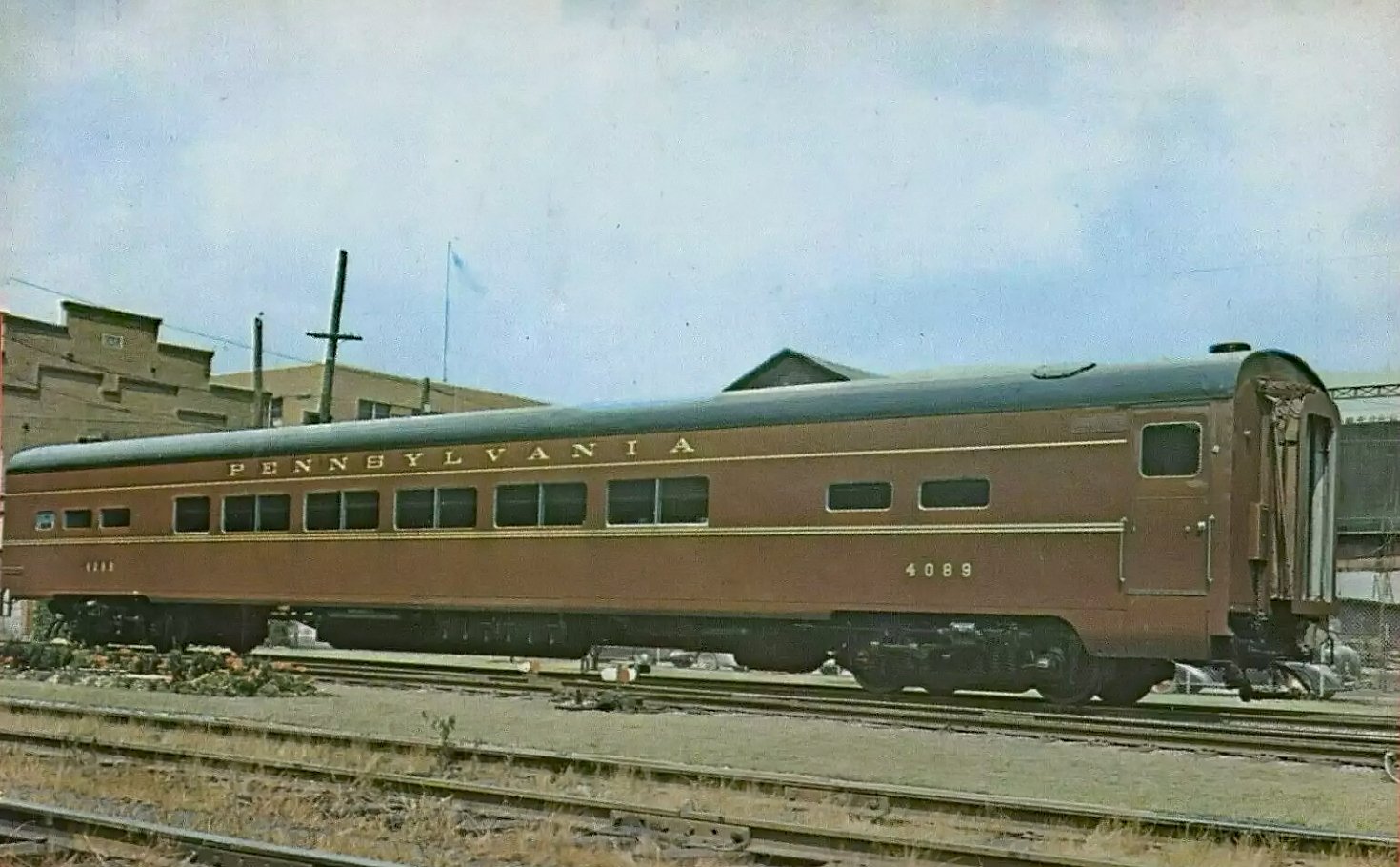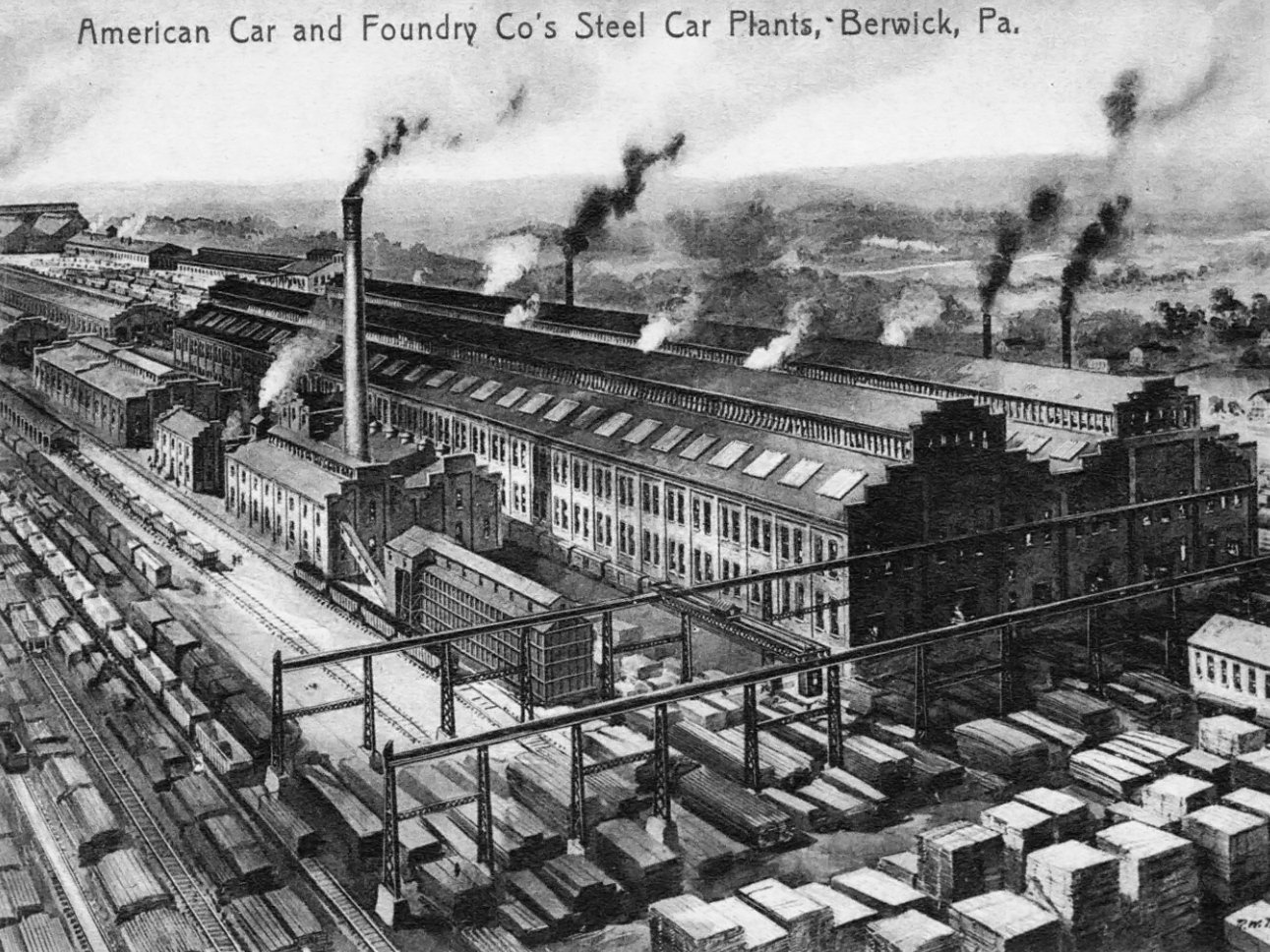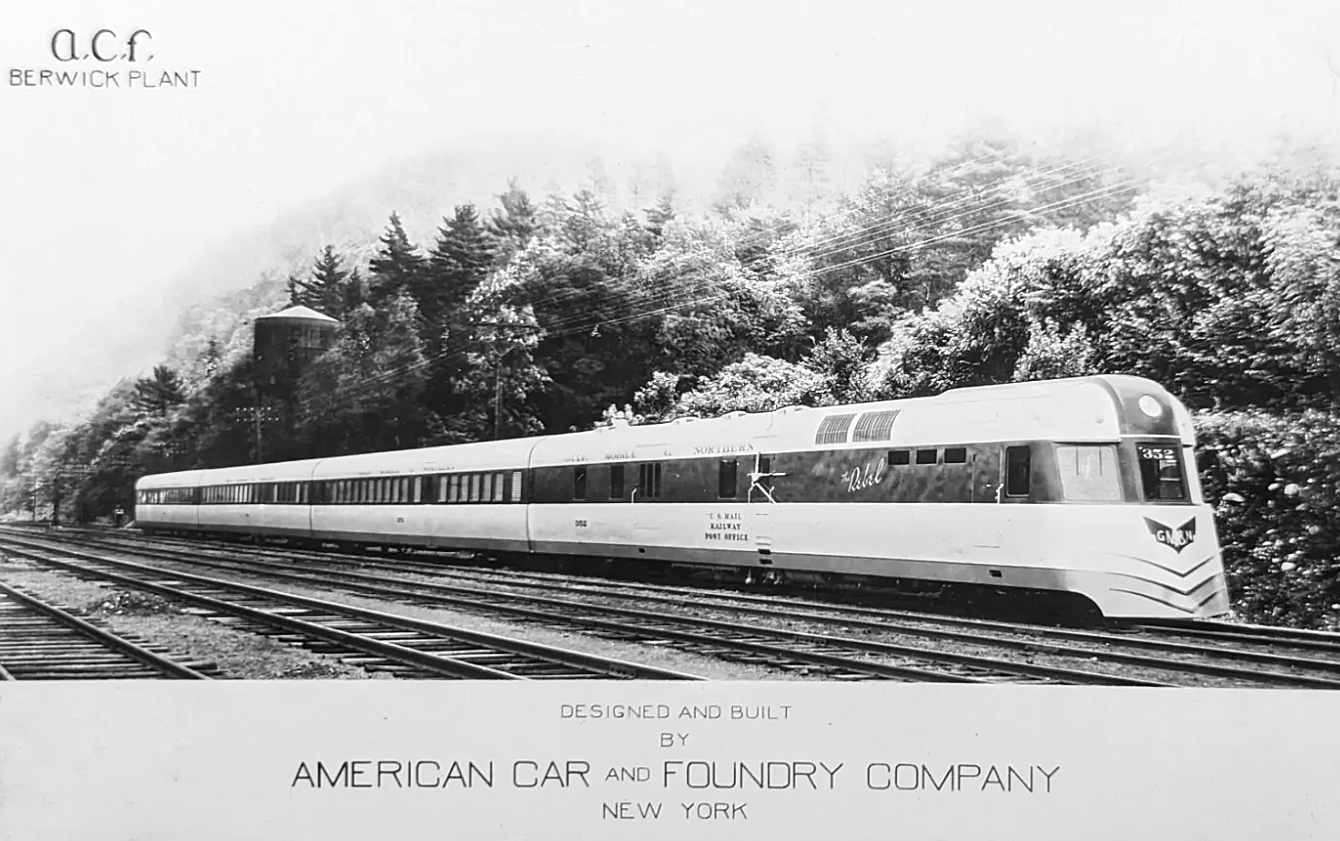American Car & Foundry: Major Railcar Builder
Published: February 1, 2025
By: Adam Burns
The American Car and Foundry Company (ACF), established in 1899 from a series of predecessor companies, holds a significant place in the industrial history of the United States.
Its evolution from a conglomeration of smaller railroad car manufacturers to a major producer of railway equipment, military vehicles, and even commercial products, mirrors the technological and economic shifts of American industry.
The ACF name survived until 2020 when it was purchased by the The Greenbrier Companies when it was renamed as the American Industrial Transport (AITX).
This article delves into the history of ACF, tracing its roots, expansion, diversification, and its lasting impact on American manufacturing.
Origins and Formation
The origins of the American Car and Foundry Company can be traced back to a time when the United States was rapidly industrializing, and the expansion of the railroad was a cornerstone of economic growth.
The official formation of ACF occurred in 1899 as the result of a merger orchestrated by a group of financiers looking to consolidate thirteen regional car makers to strengthen their competitive position in the burgeoning railroad industry.
Among the companies absorbed included:
- Buffalo Car Manufacturing Company (Buffalo)
- Ensign Manufacturing Company (Huntington, West Virginia)
- Jackson and Woodin Manufacturing Company (Berwick, Pennsylvania)
- Michigan-Peninsular Car Company (Detroit, Michigan)
- Minerva Car Works (Minerva, Ohio)
- Missouri Car and Foundry Company (St. Louis)
- Murray, Dougal and Company (Milton, Pennsylvania)
- Niagara Car Wheel Company (Buffalo)
- Ohio Falls Car Company (Jeffersonville, Indiana)
- St. Charles Car Company (St. Charles, Missouri)
- Terre Haute Car & Manufacturing Company (Terre Haute, Indiana)
- Union Car Company (Depew, New York)
- Wells and French Company (Chicago)
This union marked the inception of a corporation that would become a dominant force in railway car manufacturing.
The strategic merging of these companies allowed ACF to harness vast resources, technological expertise, and workforce capabilities to meet the increasing demand for railcars. This consolidation was part of a broader trend of industrial monopolization and vertical integration occurring across various sectors in the United States during the late 19th and early 20th centuries.
Early Expansion and Innovation
In its formative years, ACF was not just about amassing resources; it was also committed to technological innovation. By the early 1900s, the company was producing a pioneering type of steel freight car, which significantly enhanced the durability and capacity compared to the traditional wooden models. This innovation was crucial as it increased efficiency and safety in transportation, aligning with the demands of a country experiencing rapid industrial expansion.
Besides freight cars, ACF quickly expanded its manufacturing capabilities to include passenger and luxury cars, servicing the golden era of rail travel where comfort was becoming as important as functionality. The luxury Pullman cars produced by ACF were particularly popular during this time, catering to the affluent travelers of the era.
Adapting to Change: The World Wars
The outbreak of World War I marked a pivotal point in ACF’s history. The company expanded production to meet the war effort, building standard military freight and troop cars, and as the war concluded, ACF leveraged its production capabilities towards peacetime manufacturing, including more sophisticated passenger cars.
The advent of World War II once again saw ACF shifting its focus to meet military demands, highlighting its flexibility and vast manufacturing capability. During the war, ACF was involved in producing tanks and other military vehicles, which required the company to innovate beyond the traditional railcar production they were known for. This diversification not only sustained the company during the war years but also set the stage for post-war production shifts.
Post-War Diversification
The post-World War II era was one of diversification and adaptation for ACF, grounded in its strong industrial base and manufacturing prowess. The company began exploring new markets and products, reflecting broader economic shifts. ACF ventured into producing a wide array of industrial products, including truck bodies, atomic reactor shells, and even appliances such as refrigerators.
This diversification helped stabilize the company during times when the railroad industry was undergoing significant transformations and competition from other modes of transportation, such as automobiles and airplanes, was intensifying.
In particular, the post-war period saw the rise of suburbanization in America, and ACF's production of truck body parts was indicative of the increasing importance of road transportation in domestic goods movement. The adaptability of ACF during this era is a testament to its ability to respond to and capitalize on changing market dynamics.
Decline and Modern Era
Despite its success and adaptability through many decades, the advancements and shifts in transportation inevitably meant that the dominance of the railroad industry waned. By the latter part of the 20th century, ACF began scaling back its operations significantly, narrowing its focus back to specialized railway equipment and components in response to a decreased demand for new railcars.
ACF's struggles were not unique but part of a broader decline that affected most legacy rail equipment manufacturers as the nature of American transportation and logistics evolved. This period saw ACF undergoing several restructurings, mergers, and divestitures.
In contemporary times, ACF is known as ACF Industries LLC, and while much smaller than its heyday, it continues to manufacture railcars, focusing on providing high-quality services to niche markets. This refocused vision represents a strategic move to leverage its long-standing reputation and expertise in railcar manufacturing while adapting to the modern landscape of rail and freight transportation.
 Pennsylvania reclining seat chair car #4089 is seen here soon after completion at the ACF plant in 1947. Doug Wornom photo.
Pennsylvania reclining seat chair car #4089 is seen here soon after completion at the ACF plant in 1947. Doug Wornom photo.The history of the American Car and Foundry Company is a microcosm of American industrial progress—an encapsulation of the highs and lows experienced by industries adapting to economic, technological, and societal changes over the last century.
From its inception as a conglomeration of regional car builders to its role as a major industrial player at critical points in history, ACF's legacy is intertwined with the broader story of American ingenuity, resiliency, and transformation.
In navigating through periods of expansion, innovation, war-time production, and diversification post-World War II, ACF has shown remarkable adaptability. Despite facing the inevitable decline that accompanies industrial shifts, ACF Industries LLC remains a symbol of American legacy in manufacturing, showcasing how historical companies can retain relevance by evolving in tandem with the times.
Recent Articles
-
American Car & Foundry: Major Railcar Builder
Feb 01, 25 11:37 PM
The American Car & Foundry Company was a major railcar builder that manufactured freight cars, passenger cars, and even streetcars. The name survived until 2019. -
S.S. Chief Wawatam: Serving The Straits (1911-1984)
Feb 01, 25 11:04 PM
The S.S. Chief Wawatam was an iconic, long-running coal-fired car ferry serving the Straits of Mackinac between Mackinaw City and St. Ignace from 1911-1984. -
Detroit and Mackinac Railway: "The Turtle Line"
Feb 01, 25 10:33 PM
The Detroit & Mackinac Railway, better known as "The Turtle Line," served northern Michigan for over a century.




